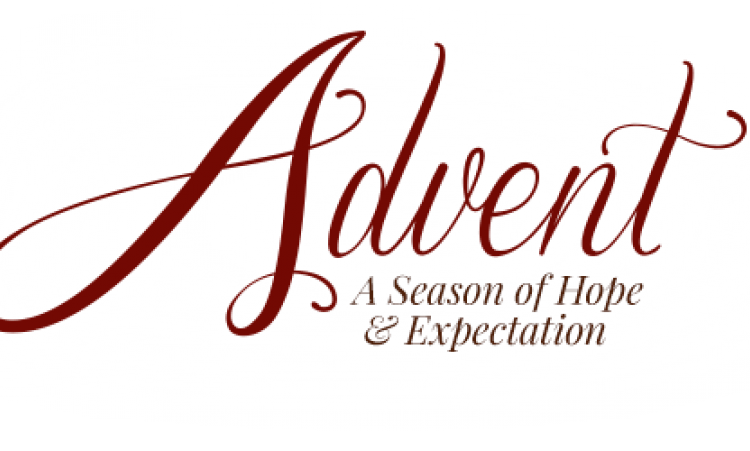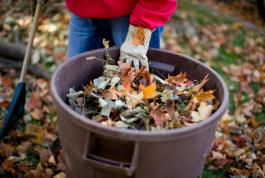With the hustle and bustle of the holiday season curtailed, it is a good year to learn a few thing about Christmas.
It seems appropriate that the first thing to be talked about in this Christmas Countdown is Advent. It really is the real Christmas countdown.
Advent means the anticipation of an arrival, and particularly of Christmas Day. For Christians this means the birth of Jesus Christ.
There is the Advent calendar and the Advent wreath with candles.
For the most part the advent calendar has lost its ties with the real meaning of Christmas. It is just a way to help count the days until Christmas.
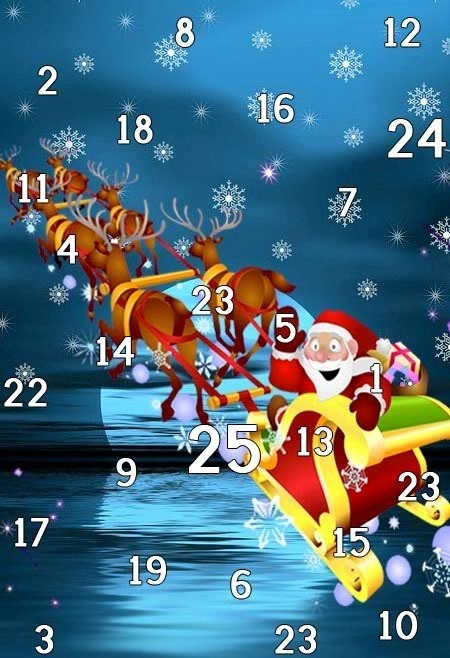
Behind each number is a little chocolate.
As a child I have memories of trying to eat only the one chocolate a day. As a mom, I really had to search to find five different but similar ones for each of my boys. I believe they also had difficulty to just have the one little chocolate a day.
Like many of our Christmas traditions, the Advent calendar can be traced to German roots. There are accounts from the 1800s of counting down Christmas with making chalk marks on doors. A German printmaker is credited with making the first Advent calendar with little doors that opened that had bible verses. The popularity in America was boosted by images of President Eisenhower opening an Advent calendar with his grandchildren. And chocolates and little presents were to be found inside by then.
I believe we need to cognize this strong anticipation of Christmas!
It is part of many family traditions. The chocolate calendars may have been replaced by some crafty decorations and some family heirlooms.
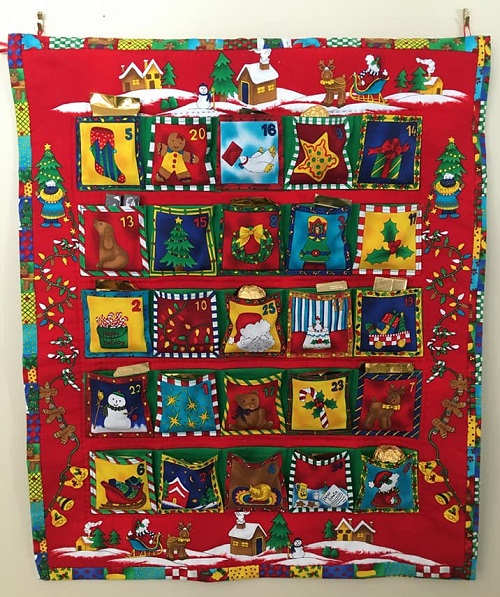
Here is a homemade one from my very crafty friend Bev Salomon from Edmonton. She fills it with chocolates!
An exclusive chocolatier implores you to not settle for cheap chocolate.
Google advent calendars and Amazon will provide a range of options crying Christmas commercialism.
The non-secular time of Advent are the four Sundays leading up to Christmas. It is a time of self-reflection, anticipation, hope, and joy.
This year the first Sunday of Advent was November 29. Each of the four Sundays is marked with the lighting of a candle in an advent wreath.
The typical wreath has four candles on the outside rim. Each week an additional candle is lit and each has a different meaning.
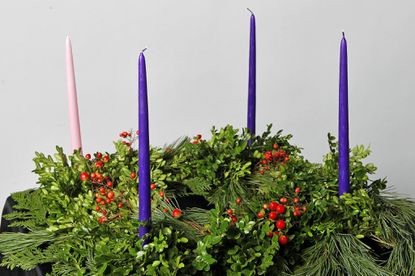
- Week One – Hope
- Week Two – Peace
- Week Three – Joy
- Week Four – Love
During Advent, the candle would be lit at the beginning of the church service.
Different faiths have different colours of candles.
- The most popular are purple for weeks one, two and four and pink for week three. Purple represents penance and pink rejoicing.
- In Orthodox Christian churches, where the observance of Advent lasts 40 days, the wreath has six candles that are green (faith), blue (hope), gold (love), white (peace), purple (penance), and red (communion).
- Members of the Moravian Church use four plain beeswax candles, reflecting a faith tradition that values simplicity and domestic work.
- Many German traditions use red candles promoting unity.
- Some Evangelical Churches have four blue candles, symbolizing hope and expectation.
- A Waldorf School tradition includes things from nature, presented in an evolutionary way, added to the wreath
First light of Stones.
Second Light of Plants.
Third Light of Beasts.
Fourth Light of Humankind.
I’ll be cynical and guess that sometimes the candle colour is to match one’s home décor.
Particularly in this time when we are dealing with so much uncertainty, Advent can provide a feeling of counting on something. There is the message of hope and renewal. As the Christmas carol bellows, this time “...brings tidings of comfort and joy.”
Have some fun with your family. Treat yourself.

